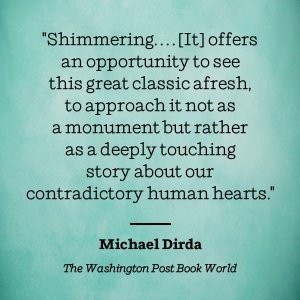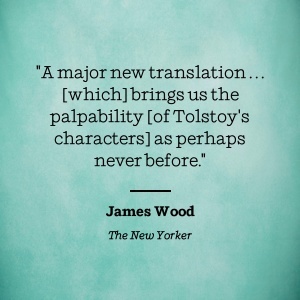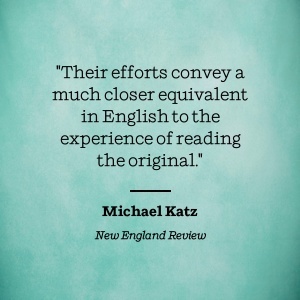Customer Services
Copyright © 2025 Desertcart Holdings Limited
Desert Online General Trading LLC
Dubai, United Arab Emirates



Full description not available



D**A
Reading this was pure joy and ecstasy - an experience like no other
For non Russian readers, the question is not whether one should read War and Peace, rather what translation to read. After some quick research on the internet, I settled for the Anthony Briggs’ translation. May be I was also biased by the fact that it was a Penguin publication, as I have been used to Penguin paperbacks since childhood. To say the least, I was not disappointed at all. The prose is easy flowing yet powerful, the style very soothing. I never felt that I was reading a translation.The only aspects that remind you that you are reading a Russian novel are the names of characters and places. Otherwise it is as English as the British can be :)The book has a very helpful ‘Appendix’ with a summary of each chapter, succinctly delivered as ‘points’. One appreciates this when one reads this 1358 page book over a period of time and needs to refresh one’s memory before embarking upon the next ‘sitting’ to read. A nicely indexed bibliography, helps the reader fully understand the historical contexts, so much necessary in this novel which is partially based on real events and real characters. Finally, there is a helpful ‘Characters’ section,which I did not notice till I had completed the book. This lists the plethora of characters that dot the story’s landscape. Many characters share same last names and above all Tolstoy tends to refer to the same person , sometimes by first name, sometimes by the last , sometimes by his/her ‘pet’ name! If you are the technical type, there are a couple of maps as well but I followed the famous graphic by the French civil engineer Charles Joseph Minard, that I already had got as a poster https://www.edwardtufte.com/tufte/postersIf I have to raise one minor grievance on the translation, it is that there is an overuse of words like sardonic, pallid, lugubrious, desultory. Perhaps these are Mr. Briggs favorite words or maybe they are equivalents of some stock Russian words that Tolstoy himself used in the original.War and Peace has been considered the greatest novel ever written and seems this is not without reason. To praise it would be to state the obvious. Orlando Figes’ concludes in his short and nice introduction, ‘Above all War and Peace will move readers by virtue of its beauty as a work of art. It is a triumphant affirmation of human life in all its richness and complexity…’.It is perhaps appropriate to share one’s experiences in the course of reading this epicI experienced joy and ecstasy like no other. Joy of reading at its best. No Disney or Spielberg movie have given me this level of enjoyment and may I say exhilaration. It was so personal. I lived through the characters, imbibed the flavor of the times, entered the battle grounds, rode the thoroughbred horses, strode through the vestibules of stately mansions, smelt the perfumes wafting through manors, sat in their drawing rooms, drank in the bars, donned their costumes, suffered bodily injury and pain and even knew what it was like to die. I was awe struck at the range of emotions that a single person is capable of going through over a period, however never doubting that this was impossible, never seeing unreal.Every human emotion/experience that one can think of is represented in the pantheon of characters that appear in this epic. It is to Tolstoy’s credit that he has so beautifully portrayed perhaps every conceivable emotion in human relationships. Curiosity,infatuation,adolescent love, passion, closeness, pure and true love - all come into play. Characters serve up abundantly the very humane qualities of wisdom, bravery, patriotism, loyalty, intrigue,treachery, self doubt, righteous indignation, piety, innocence, vanity, pride and many many more.War and Peace is also philosophical, with characters ruminating on life’s purpose and God. A young lady of pious character beautifully enunciates the principles of Christianity, albeit in a subtle way, without the reader getting the slightest hint that it is a digression.As somebody said, it should perhaps have been named ‘Peace and War‘ because Tolstoy devotes the initial part of the book to the halcyon days enjoyed by Russian aristocracy set in villas amidst placid surroundings. The Napoleonic war sets in later and when it does, it gradually upends the lives of the main protagonists. To Tolstoy’s credit, he deftly marries these two worlds and the story meanders through with twists and turns, the war sucking in everybody in its wake, a war that also brings the main characters to the front lines. The novel dwells at length on all that is there to a war - strategies, commandeering armies, the accompanying treachery, mortalities on the field, suffering and what not. Napoleon’s famous but disastrous march to Moscow and the retreat that followed has been gone through with a fine toothed comb. At times the novel sounds more like a historical account, especially when Tolstoy seems to take a step back and starts offering his own analysis on why somebody did what they did in the war and not something else. In doing so, Tolstoy rips apart earlier historians of his period, both French and Russian, questioning their proclivity to explain happenings as the result of conscious moves made by the “great” Napoleon on the French side or efforts by able generals on the Russian end. He goes into a detailed analysis on reasons for the Russian retreat in the face of the advancing French while also exposing how uncoordinated the Russian generals were to deal a concerted onslaught. He also tries to set right the unfavorable treatment meted out by historians to General Kutuzov of the Russian Army by highlighting his wisdom and farsightedness in refusing to be drawn into battles with the French during their retreat when there were apparently grounds for doing so. Tolstoy seems to reserve choice criticisms for Napoleon and makes no secret of his opinion that the general was overrated.The epilogue stretches too long (100 pages) and is a laborious monologue of Tolstoy’s own theories about history and how historical biographies should be written, etc.The author repeats himself many times in the course of the epilogue as well as in the main part of the book by espousing his own theories on how war histories should be written.He even ventures into philosophy and jurisprudence. If not for the fact that a small portion of the epilogue is tied to the story, the reader could have safely skipped this portion.(If you plan to read the book you can skip the following)Last but not least, like any reader who broods over something that has been so engaging and rewarding, I thought about the novel’s purpose. Was there a message? I am not sure whether Tolstoy intended to, but I clearly saw a message delivered at two levels - human being and humanity as a whole.. At the human level, the novel shows that good prevails over evil by way of rewarding people who are intrinsically good (Marie/Princess Marya and Pierre) or people who redeem themselves (Natasha). At the level of humanity, it shows the frivolity of war, by exposing how in the final analysis the war did not achieve any purpose other than suffering and death.
T**D
A great book but a tough read
Translated works notoriously fall short of the originals, especially in the case of such great novels as War and Peace. Leo Tolstoy is a great author who expounds profound thoughts and philosophy through his novels, and the translators have tried to keep up with the beauty of the original. Kudos to the translators for this work. Still, I struggled with the last 50 pages where the author goes on a journey into the world of philosophy of the struggle of human free will against human compulsions. It may be because of my limited ability to understand or a shortcoming of the translation, I don't know. I should thank the translators for translating this monumental work and making it available to the English-speaking world. And also made me feel sorry for not being able to read the original because of my ignorance of the Russian language.I have to caution those who are about to embark on this reading journey of War and Peace, as it is quite daunting, and sometimes the book slows to a crawling pace. You have to exercise tremendous will and patience to sit through the introduction of the 200-odd characters in this book. It is also a memory exercise and a challenge to remember the characters and what they are up to as the plot thickens. If you are expecting a thrill a minute of a Stephen King novel, then expect to be disappointed.All in all, a great read and time well spent.
A**R
Vintage Classics, Pevear & Volokhonsky: Best edition I've seen (review slighted updated for clarity)
I have, at various times, tried to read four different editions of War & Peace (Penguin, Signet, Barnes & Noble, and now this) and by far, this (the Pevear and Volokhonsky translation from Vintage Classics) is the best edition I've seen. This edition is everything I was looking for in a copy of War & Peace and I cannot recommend it highly enough. This is the edition of War & Peace I finished, and it bound to become the standard for the foreseeable future.Pros:It is highly readable. Translating texts is always difficult, because you want to retain the feel of reading a Nineteenth century work but use language that makes the work accessible. Personally, I found some editions (Barnes & Noble, Penguin) to be hard to read and comprehend, especially when you first begin. This edition is a relative breeze to read.It has French translations. When reading the Signet edition, I found myself using google translate to understand sentences or phrases left in the book in French. Other editions translated most of the French but left phrases here and there untranslated and in the text, without footnotes. I understand in the original, Tolstoy wrote entire passages in French but provided translations in the foot notes. This edition follows that pattern. There are entire passages in French, but they are translated in the footnotes on the page.It has historical end-notes and an index. I am not unfamiliar with European and Russian history, but I, like most people, have no more knowledge than what I learned in my freshman world history class. This work has end notes in the text to provide context. Though it slows me down, I find myself flipping to the back of the book and reading every end note when the text provides it. I cannot stress enough how helpful this has been. The index is likewise helpful. It is an alphabetical list and short biography of the historical characters and places mentioned in War and Peace.It includes a short chapter summary. At the very end of the book, there is a chapter summary for a collection of chapters sharing a theme or describing the same event. The summary is no more than a sentence long and provides a nice refresher when you are trying to recall what happened when.Cons:Compared to editions that translate all the French, reading in the footnotes can be burdensome. I personally don't mind, but I can see how that might trip some people up.If you are looking for a copy of War and Peace, this is the one to get. Trust me.
Trustpilot
2 weeks ago
1 week ago